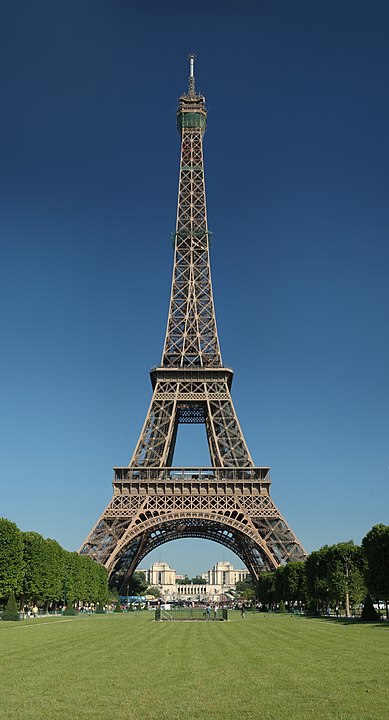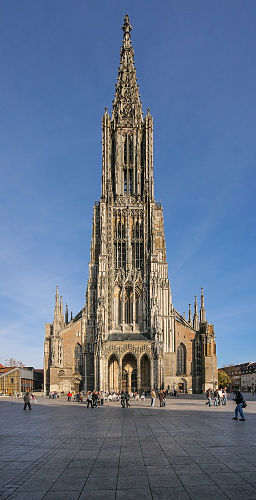An Analogy
We cannot build the new economic paradigm we need if we use our current building blocks.
Gustave Eiffel created an entirely new paradigm for tall buildings. His tower was double the height (324m) of the then tallest tower, the Ulm Minster (162m).
By creating a completely new building paradigm, based on a brand-new building block, steel, he demonstrated how to do what was absolutely impossible in the stone paradigm.
We cannot build the new economic paradigm we need if we use our current building blocks, just as a 324m stone tower would have collapsed into rubble.
The Backdrop
The company is one building block of our economy; and the limited company dominates. The other building blocks are you, me, and nature; wearing multiple hats as staff, investors, suppliers, etc. of the different capitals we bring.
These building blocks are the dots in a join the dots image. And like a join the dots image, the dots are secondary; the connections between them are primary. Connections, relationships, the lines between the dots are the economy. Stakeholder Capitalism succeeds or fails to the extent that the building block, the company, puts all relevant kinds of connections onto an equitable footing in the incorporation.
Currencies turn the connections from static to dynamic, forming an economy of value flows of all capitals, thereby providing for needs. Today one currency type, positive interest bank debt, a.k.a. money, overwhelmingly dominates.
There have been many attempts to create alternatives to the limited company—e.g., traditional cooperatives and employee-owned companies. They are better, but they’re incremental improvements, within the same paradigm, too weak to be the game changer we need because they still exclude key stakeholders and relationships from governance inside the company.
Our current economy, built on these company forms and money, gives rise to major enemies for the long term sustainability of humanity, because its very foundation is inequality, which creates corruption, polarisation, war and worse.
The world is starting to appreciate the power of a more appropriate, robust, free-standing stakeholder economy. But by any measure we can easily prove it will be too fragile for us to have a long-term future if we use the current building blocks.
The Critical Insight
There is a nearly invisible, significant and systemic reason why all attempts to transform business and our economy in the past five decades have failed. Whether it’s (for example) triple bottom line, circular/regenerative economy, or fair trade, they’ve all fallen far short.
They’re incapable of delivering the reliable long-term social and environmental turn-around humanity needs because all the governance power is concentrated in one type of stakeholder, within a framework of financial capital and its currency, money.
Such building blocks cannot support the fundamentals that circular and regenerative economies depend on, especially the systemic trust needed to create mutual interdependence between multiple companies, capitals, and stakeholders.
The Building Blocks of a stakeholder economy
Economies are there to provision; providing for needs by growing capitals and transporting them from places of abundance to places of need.
We’ve designed, and are now delivering, the architecture, blueprint and formula for a stakeholder economy:
- All capitals are part of the company structure.
- All stakeholders representing these capitals have governance power in the company.
- No capital has primacy over any other capital.
- Multiple capitals are multiplied in each company, all are multiplied in the economy.
- Each capital’s stakeholders benefit from the wealth generated in all capitals.
And:
- We are already building these all-capitals all-stakeholders companies.
- Most countries’ company law already allows these companies to be built.
- We are already building the complementary currencies we need, at least one native to each capital, i.e., behaving the same way over time.
Get Involved
Want to start building?
We’ve already published the guide book and manual for the stakeholder economy: Rebuild: the Economy, Leadership, and You.
TW, LI: Graham Boyd (@grahamboydphd) and Jack Reardon (@profJackReardon)
Acknowledgements
- Eiffel Tower: Benh Lieu Song, Wikimedia, CC-BY-SA
- Ulm Minster: Martin Kraft, Wikimedia, CC-BY-SA

